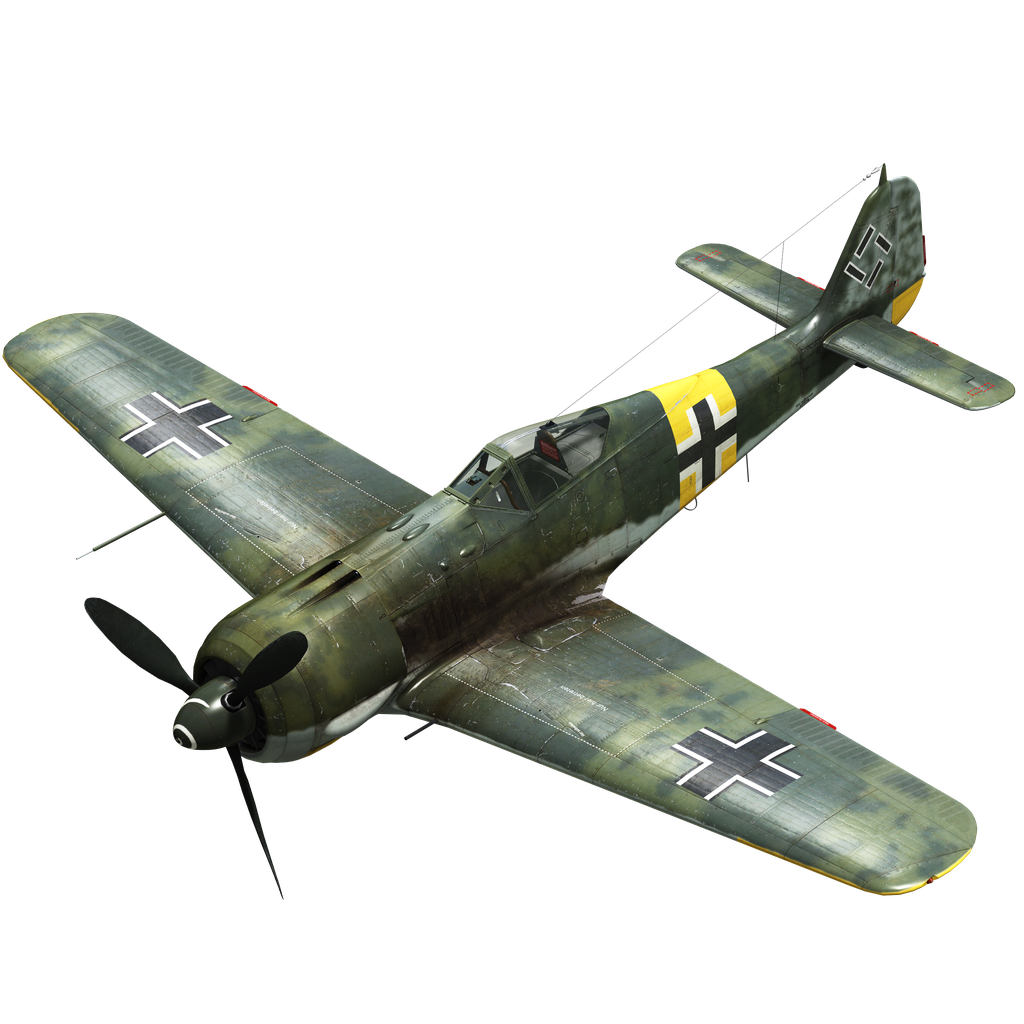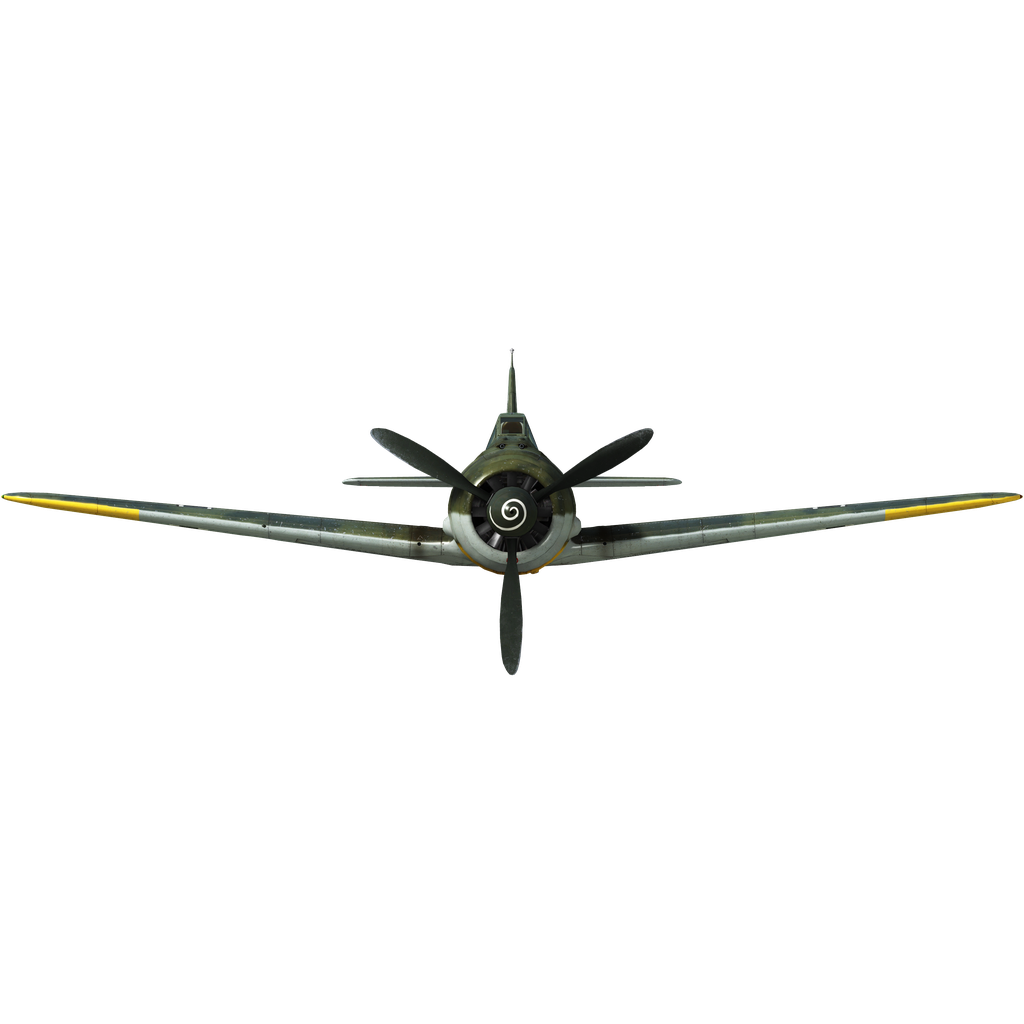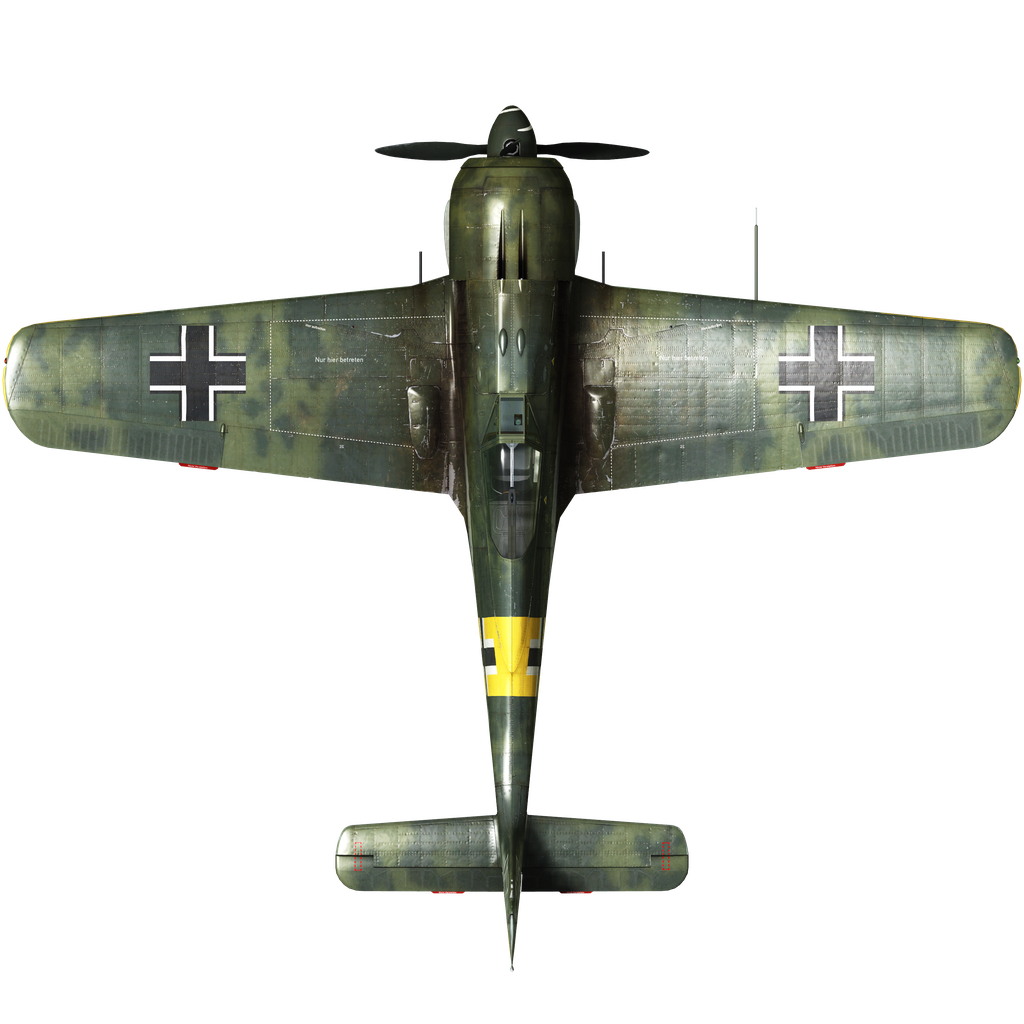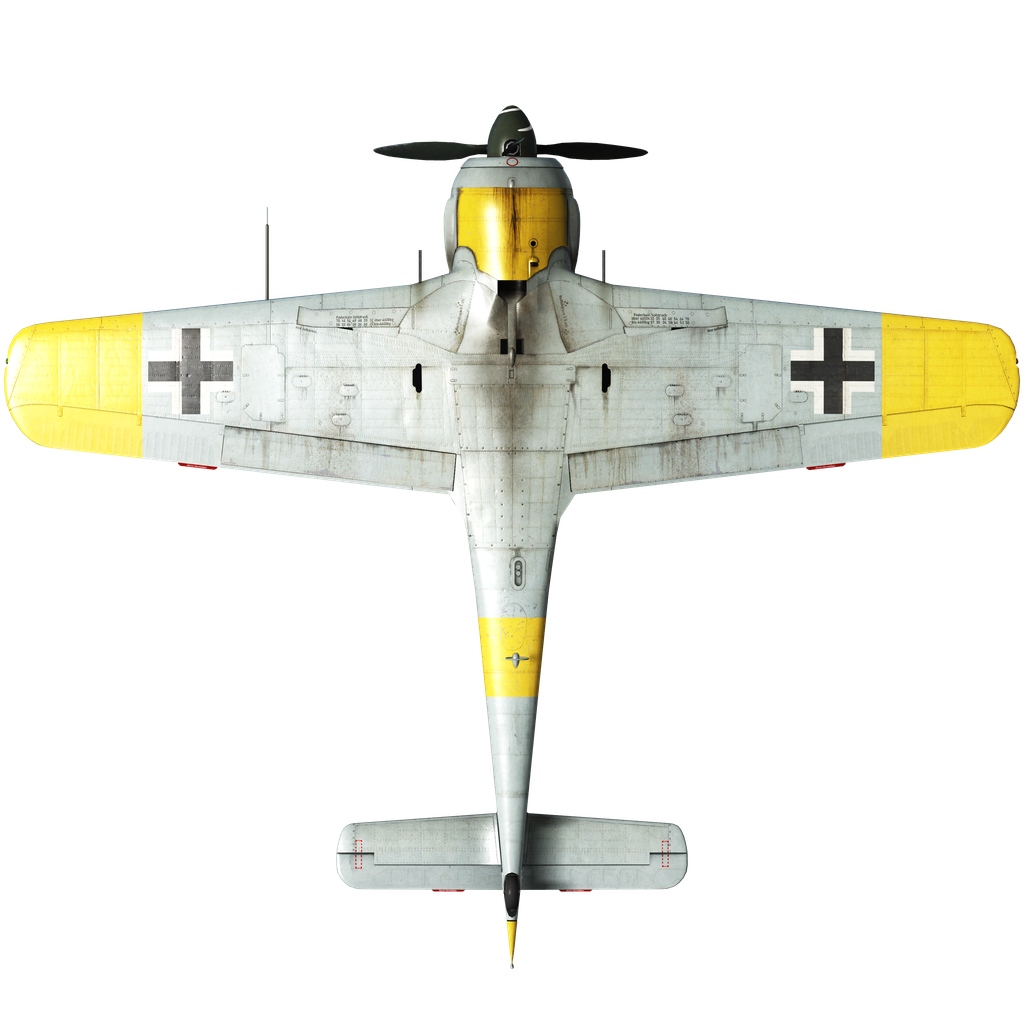In 1938, the Luftwaffe Technical Directorate, disappointed by the debut of the first Bf 109 series in Spain, asked Focke-Wulf to design a new fighter. A distinctive feature of the new aircraft, whose prototype took to the skies on June 1, 1939, was the use of an air-cooled engine and a large convex cockpit canopy with a minimum of metal binding parts. The aircraft was characterized by good controllability and low stick loading. From the fall of 1940 to 1942, aircraft from the A-0 to A-4 series were delivered to combat units.
In November 1942, a new version of the Fw 190 A-5 fighter went into production. The prototype for the A-5 was a modified version of the A-3/U1, in which the forward section of the fuselage was lengthened by 150 mm, which significantly improved controllability. The armament remained the same: two MG 151/20 cannons in the wing roots, two MG/FF cannons in the outer wing sections, and two synchronized MG 17 machine guns in the forward fuselage. The attack modifications were equipped with a system to increase the power of the engine, using an additional injection of C-3 fuel (with 96 octane) for a short-term emergency increase in maximum speed at altitudes below 1000 m.
-
A-5/U2: night fighter-bomber with extended range. It had anti-reflective strips on the engine exhausts, a bomb rack under the fuselage, and two Messerschmitt bomb racks under the wings for 300-liter drop tanks. Armament: two MG 151/20 cannons. Later designated Fw 190 G-2/N;
-
A-5/U3: attack aircraft (fighter-bomber) also without MG/FF cannons. It had three bomb racks — one under the fuselage for 500 kg bombs and two under the wings for 250 kg bombs, as well as additional armor. Later the designation was changed to Fw 190 F-2. There was also a tropical version, the A-5/U3/trop (F-2trop);
-
A-5/U4: fighter-reconnaissance aircraft with two Rb 12.5/7x9 aerial cameras and without MG/FF cannons. There was also a tropical version A-5/U4/trop;
-
A-5/U8: Extended range fighter-bomber with ETC 501 bomb rack under the fuselage. Prototype for the G-1 series (equipped with Junkers underwing racks for 300-liter drop tanks) and G-2 (equipped with Messerschmitt racks). Armament: two MG 151/20 cannons in the wing root;
-
A-5/U9: experimental version with MG 131 heavy machine guns instead of MG 17 and MG 151/20 cannons instead of MG/FF. Two built;
-
A-5/U10: experimental version with MG 151 cannons in the outer wing instead of MG/FF. Two were built and became prototypes for later production;
-
A-5/U11: experimental version, equipped with 30 mm MK 103 outboard cannons instead of MG/FF cannons. One prototype was built — this variant was later used in the R3 Field Development Kit;
-
A-5/U12: with two gunpods, each with a pair of MG 151/20 cannons instead of MG/FF cannons, for a total of six cannons. Two aircraft were built;
-
A-5/U13: with autopilot. Three aircraft were built which became prototypes for the G-3 model;
-
A-5/U14 and A-5/U15: experimental torpedo fighter variants. One aircraft was built. After the tests ended with unsatisfactory results, U15 was used for experiments with the BV 246 glide bomb;
-
A-5/U16: instead of MG/FFs, 30 mm MK 108 cannons were installed in the outer wing for attacks on bomber formations. One aircraft was built, this weapon variant was later used for the R2 kit;
-
A-5/U17: attack aircraft, prototype for the F-3/R1 series with one ETC 501 bomb rack under the fuselage and four ETC 50s under the wings for 50 kg bombs.
-
A-5/R3: with 30 mm MK 103 external cannons instead of MG/FF cannons.
-
A-4/R6 (similar to the A-4 modification): a fighter armed with two Wfr.Gr.21 unguided rockets. Such vehicles were called "Formation Destroyers" in the Luftwaffe. These 210 mm rockets were first used in the summer of 1943. The experiment was considered successful, but the number of enemy aircraft hit by the projectiles was small since the projectile had a remote fuse that was set on the ground. In combat, pilots had difficulty in determining the distance to the target and inaccurately chose the necessary lead: it was calculated that the destruction of part of the group's bombers by shrapnel would force them to change course and disrupt the battle formation, and the fighters, having jettisoned their rocket launchers, would then enter the battle with their cannons.
Another A-5/R6 was tested with 280 mm Wfr.Gr.28 rockets, which was unsuccessful.
Between November 1942 and June 1943, 1,752 fighters of the A-5 modification were produced.
Used sources:
1. W. Creen “The Warplanes of the Third Reich”, Galahad Books, 1986
2. “Wings of the Luftwaffe” Translation of V. Green’s book “Combat Aircraft of the Third Reich” by A. Firsov, 1993
3. A.N. Bear "Focke-Wulf FW190" Arsenal-Press, 1993
4. O. Rastrenin “Luftwaffe attack aircraft. Myths and Reality” journal. Aviation and Cosmonautics, No. 3, 2014
5. Materials from the site airwar.ru






